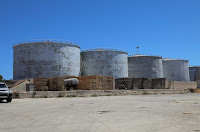Oil prices slipped on Tuesday after rebounding more than 7%
over the previous three sessions on supply concerns prompted by fears of
widening Middle East conflict and a potential shutdown of most of Libya's oil
fields.
After the jump in oil prices on the back of geopolitical
risk in the Middle East and a production halt in Libya, market participants are
now holding back to assess further developments.
The 7% rise in Brent and 7.6% rise in WTI in the previous
three sessions bucked a broader downtrend since hitting its 2024 peak of US$91.17
in April. The downturn was driven by concern over global crude demand,
particularly from China and through the summer, which is typically a peak
demand period.
On Monday, authorities in the Libya's east, where most of
its oilfields are located threatened to halting production and exports, after a
flare-up in tensions over leadership of the country's central bank. Those
fields are responsible for almost all the country's 1.17 million barrels per
day of crude output.
The jump in Brent has primarily been driven by short-term
supply worries at the same time the weak demand outlook, especially for diesel,
has driven down refinery margins across the world, said Ole Hansen, head of
commodity strategy at Saxo Bank.
"It highlights an oil market that, without a prolonged
Libyan supply disruption, may struggle to move much higher, with the mid-80s
potentially providing a ceiling for now," Hansen added.
There was no confirmation from the internationally recognized
government in Tripoli or from National Oil Corp (NOC), which controls the
country's oil resources.
Oil has also been supported by an escalation in conflict
between Israel and Iran-backed Hezbollah, with a major exchange of missiles after
the killing of a senior Hezbollah commander last month.
"Markets remain on edge as skirmishes between Israel
and Hezbollah intensify," ANZ analysts said in a note
A top US general said on Monday that the danger of a broader
war had eased somewhat but that an Iran strike on Israel remained a risk.
